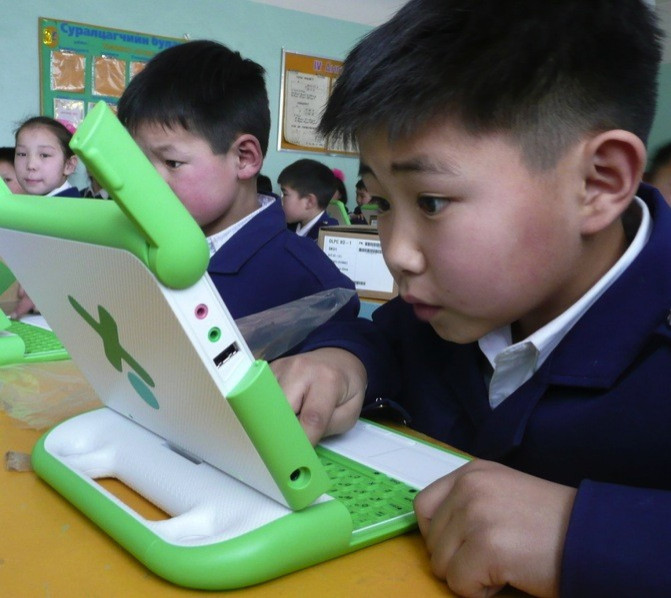CES 2012: Why Steve Jobs Would Approve the 'One Laptop Per Child' Tablet
Live from CES 2012

On Monday, nonprofit group One Laptop Per Child will debut its XO 3.0 tablet at the Consumer Electronics Show (CES) 2012 in Las Vegas. The cheap tablet, designed for children in poor and developing countries, will run on a Marvell ARMADA PXA618 SOC processor, an Avastar Wi-Fi system-on-a-chip, a standard or Pixel Qi display to read off the tablet in sunlight, and will also support both Android and Linux operating systems. This will be the first tablet to be powered by solar energy, as well as alternative energy sources like hand-cranks.
We're proud to introduce the XO 3.0 tablet, showcasing the design, durability and performance features that make it a natural successor for our current laptops, which have been distributed to more than 2.4 million children in 42 countries and in 25 languages, said Edward McNierney, CTO of One Laptop Per Child. The XO 3.0 builds on many of the technology breakthroughs we made with the XO 1.75... resulting in a significant decrease in power consumption - a critical issue for students in the developing world.
One Laptop Per Child's first tablet will be priced at $99, but this won't be the cheapest laptop in the world. That title belongs to India's Aakash tablet, which costs only $35. Funded and produced by the Indian government, British tech company Datawind, and the Indian Institute of Technology, Aakash runs on Android 2.2 Froyo, and features a 7-inch touchscreen, 32 GB of storage, and 256 MB of RAM. The tablet lasts between two to three hours without recharge and can withstand the intense heat of India's climate.
The tablet developed by One Laptop Per Child will similarly be able to brave harsh weather conditions, but little is known about the tablet's battery or processor capacity. One Laptop Per Child, which hoped to put free laptops into the hands of 1 billion impoverished children around the world, began producing its laptops back in 2007 and has been working on the tablet since 2010.
We aim to provide each child with a rugged, low-cost, low-power, connected laptop, reads One Laptop Per Child's mission statement. To this end, we have designed hardware, content and software for collaborative, joyful, and self-empowered learning. With access to this type of tool, children are engaged in their own education, and learn, share, and create together. They become connected to each other, to the world and to a brighter future.
One Laptop Per Child's tablet can accomplish things that its laptop cannot. The XO-3 tablet, designed by the Fuseproject, features a flexible and durable all-plastic screen, which can be optimized for both indoor and outdoor lighting conditions so children can bring their tablets with them everywhere they go. The tablet can also be rotated into horizontal book mode for reading and gaming, and its multi-touch capabilities allow multiple children to learn and play together. It also comes with a full touch-screen keyboard and a rear camera.
Steve Jobs would have surely approved.
Design is not just what it looks like. Design is how it works, said Jobs, the late co-founder and chairman of Apple.
One Laptop Per Child's new XO-3 may not be able to compete with the best tablets on the market, but that isn't the company's intention. Tablets are far more intuitive than computers, especially for children and those with learning disabilities, and bringing free technology to the children of the world is the same mission that Apple's founders, Jobs and Steve Wozniak, wanted for their company from the very beginning. Even though Apple originally attached steep costs to its computers, now that the company has developed, it now aims to deliver the world's best technology for the cheapest prices. In late 2011, Apple made its high-end iPhone 4 available for $99, and made its two-year-old iPhone 3GS absolutely free with a two-year contract.
The XO-3 may not be able to play HD movies or Angry Birds, but any tablet is better than no tablet for most of the world's citizens.
One Laptop Per Child will ship more than 75,000 units of its XO 1.75 laptop to students in Nicaragua and Uruguay in March. More about its XO-3 tablet will be revealed Monday at CES 2012.
© Copyright IBTimes 2024. All rights reserved.






















